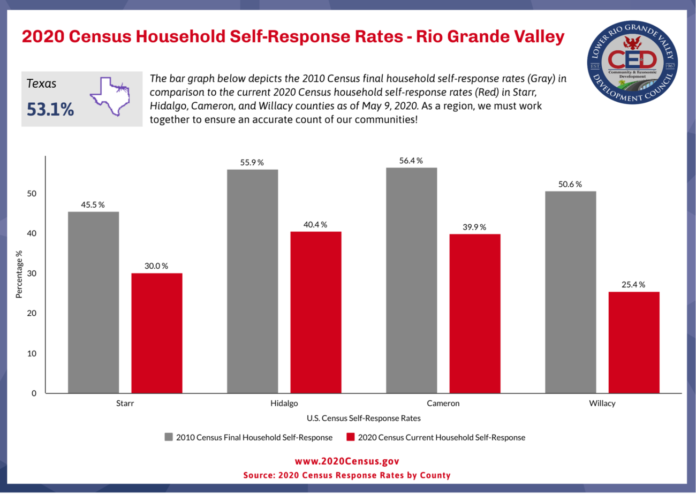HARLINGEN — Lockdowns and shutdowns linked to the coronavirus pandemic have slowed the critical Census 2020 count, but the Valley still lags behind the rest of the state and the nation.
The national response rate for filling out the Census 2020 form and either mailing it in or doing the quick online survey of the occupants living in each household is 58.5 percent.
In Texas as a whole, 53.1 percent of households have responded to the census inquiry.
But the Valley is trailing those numbers by significant margins.
In Cameron County, 39.4 percent of households have responded. In Hidalgo County, the total is 40.4 percent.
In Willacy County, just 25.4 percent of households have responded, and in Starr County the percentage is 30.0.
At stake in the Census 2020 count for the Rio Grande Valley are hundreds of millions of dollars in federal funds disbursed on the basis of population over the next 10 years.
For each Valley resident who goes uncounted, estimates are it costs the county and city where they live $1,500 a year in missed funding. Multiply that by 10 years, and the concern among Valley leaders this year is palpable given the fact the region historically has been undercounted in the past.
This year for the first time respondents can complete their census form online, which takes about five minutes at the website https://my2020census.gov/
In Hidalgo County, 31.5 percent of the households that have completed the census have used the online option.
In Cameron County, the percentage filing online is 29.6 percent.
In Willacy County, the number of households using the online option is 12.6 percent, and in Starr County 18.1 percent.
In March, the U.S. Census bureau announced it would push back its final deadline for the count by two weeks from July 31 to mid-August due to the complications of COVID-19.
At the urging of the Trump administration, the bureau also has requested a four-month delay beyond Dec. 31 in delivering the count, until April 30.
That could mean states don’t receive updated census numbers used to redraw congressional district maps until July 31.





